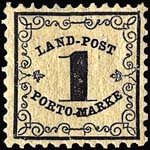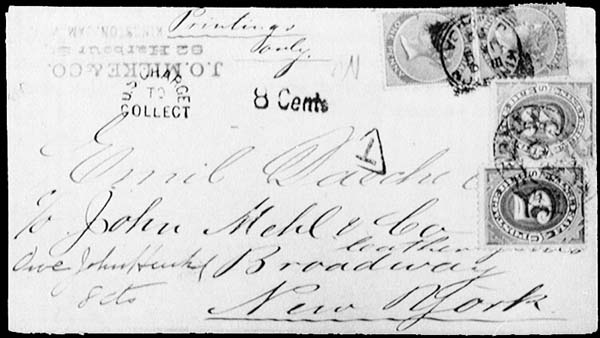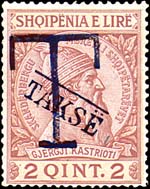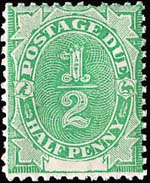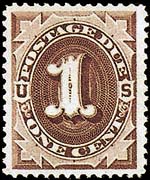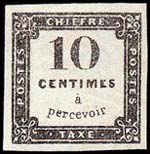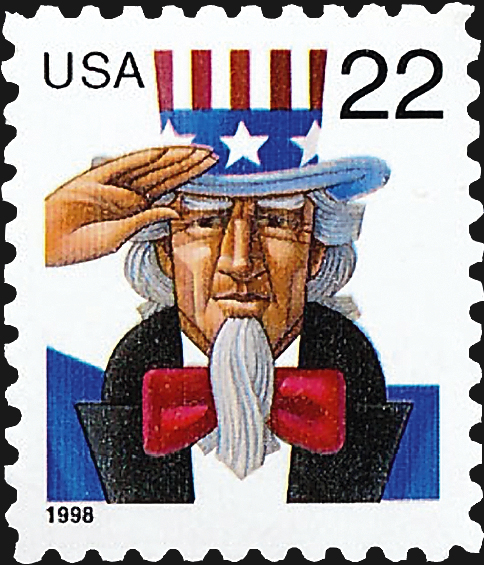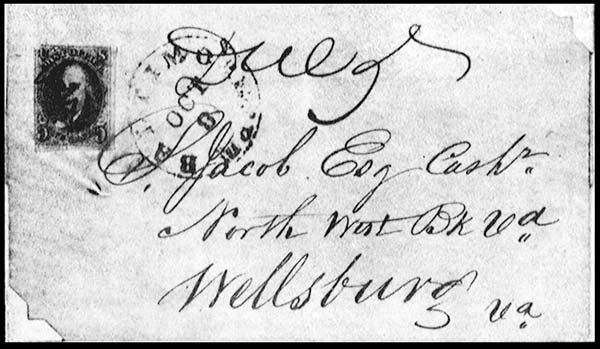POSTAL UPDATES
insights
Postage due stamps kept postmasters honest
By Rick Miller
In the era of stampless letters, it was generally accepted that the recipient would pay the postage on a letter at the time that it was delivered.
People would normally only write to someone if they knew that the recipient would be able and willing to pay the postage to receive the letter.
What is believed to be the oldest-known cover with a postal marking is a letter mailed from Ghent to Bruges in the Spanish Netherlands in 1533. On its front it bears a letter "P" indicating that postage was to be paid by the recipient.
The idea that the sender should prepay the postage at the time of mailing began to take hold in the 1800s. By 1855, the United States Post Office Department required prepayment of postage.
It was the need to show evidence of prepayment of postage that eventually resulted in the invention of the adhesive postage stamp.
Beginning in the 18th century, letters for which postage had been paid were marked "PD," "PAID," "POST PAID" or equivalent marks in other languages. Letters had to be mailed from a post office or other postal agent in order to be marked as paid.
Eventually a letter bearing an adhesive postage stamp could be mailed at a letter box, where they existed. However, some letters so posted were short-paid, intentionally or not.
The provisions of most postal authorities permitted short-paid letters to be delivered, with the balance due collected from the recipient.
Insufficiently paid letters were often marked "Held for Postage."
The letter was held at the post office and a notice was sent to the addressee. When the addressee paid the postage, the letter was handed over.
Initially, short-paid letters were marked in manuscript with the amount to be collected at delivery. On occasion, the recipient might have suspected that a postal worker could have added the notation to try to pocket the money collected.
A cover mailed circa 1850 from Baltimore, Md., to Wellsburg, Va., with a manuscript "Due 5" postmark is shown in Figure 1.
Over time, handstamp postmarking devices for postage due began to supplant manuscript markings.
The cover shown in Figure 2 was mailed in 1870 from Malta to Jersey, one of the Channel Islands. It was charged 2 pence more for postage as well as a 6d fine. It bears three different postage due handstamps: a "MORE TO PAY" stamp at lower right, a "DEFICIENT POSTAGE, FINE" stamp at the upper left and the circled "8D" stamp to the left of the postmark.
Unfortunately, there was no way to properly account for money collected through the use of manuscript or handstamped postage due markings. A dishonest postmaster could pocket the money collected, and no one would be the wiser.
Eventually, postage due stamps were devised to provide an official-looking notation of how much was owed, and as an internal accounting tool for money collected.
Postage due stamps required that the postmaster balance the books between the value of postage due stamps used and the amount of funds collected. By using postage due stamps as an accounting tool, postal services insured that the money collected was going into postal accounts and not being skimmed off by the local postmaster or postal clerks.
Perhaps as a reflection on the honesty of its postmasters, France was the first nation to issue postage due stamps, in 1859, and the rather plain, utilitarian design chosen set the style for most postage due stamps to come. Most postage due stamps do not have much sex appeal.
The world's first postage due stamp, a 10-centime black stamp, France Scott J1, is shown in Figure 3. Postage due stamp numbers are prefixed with the letter "J" in the Scott Standard Postage Stamp Catalogue and other Scott catalogs.
Because postage due stamps are intended as an internal accounting tool, many of them, such as the first one from France, do not show the name of the issuing country.
The standard practice for using postage due stamps was to affix them to the short-paid piece in the amount owed and then to cancel them, often with a mute cancel, when the money was collected.
The United States issued its first postage due stamps on July 1, 1879. The design was simple and broadly followed the French example: a large numeral of value inside an oval frame bearing the words, "POSTAGE DUE" and the spelled-out amount. The letters "U" and "S" appeared on either side of the frame to indicate nationality.
A 1¢ brown Numeral postage due stamp from the first U.S. series, Scott J1, is shown in Figure 4.
The United States stopped using postage due stamps in August 1986.
Charles Caleb Colton said, "Imitation is the sincerest of flattery." The U.S. Post Office Department must have felt greatly flattered when Australia issued its first postage due stamps in 1902. Its ½d emerald Numeral postage due stamp, Scott J1, from the first set is shown in Figure 5.
The resemblance between the two stamp designs is too great to have been coincidental. Fortunately, the Australians were sharp enough to replace the initials "U" and "S" with silhouettes of a kangaroo and an emu.
Some postal administrations produced provisional postage due stamps by handstamping or overprinting regular postage stamps with a large "T" or the word "Taxe" or its equivalent in other languages.
An Albanian 2-quintar orange-brown and bluff provisional postage due stamp, Scott J1, is shown in Figure 6.
From October to December 1919, Belgian post offices ran out of postage due stamps. As a substitute they applied locally a large black "T" handstamp to postage stamps of the 1915 series. Because the handstamps were applied locally, these stamps are not listed by Scott. However, authentic uses of them on cover are quite valuable.
The development and use of postage due stamps did not mean the end of handstamps.
The Universal Postal Union Convention of Paris of 1878 required that short-paid international mail between member nations be marked by the originating country with the letter "T," which stands for the French word "taxe," to warn the receiving country that postage due was to be collected from the recipient.
Sometimes the "T" was plain, but more often it was enclosed in a circle, triangle, hexagon or octagon.
The cover show in Figure 7 was mailed from Jamaica in January 1889. It bears a "T" inside a triangle, a UPU-mandated postage due marking, as well as handstamps reading "U.S. CHARGE TO COLLECT" and "8 Cents." The cover was underpaid by 4¢, which under the postal regulations, was doubled to 8¢ as a penalty.
A few mixed categories of postage due stamps are scattered through the Scott catalog listings.
Rural and regional postage due stamps are prefixed "LJ" in the catalogs.
Rural postage due stamps have been issued only by the old German state of Baden. A 1-kreuzer black on yellow paper Numeral rural postage due stamp, Scott LJ1, is shown in Figure 8.
Rural postage due stamps are in a way the opposite of U.S. Rural Free Delivery. Stamps to rural addresses in Baden required additional postage, which was collected through the use of rural postage due stamps.
Although lumped together with the rural stamps by the Scott classification system, the country postage due stamps of Bosnia and Herzegovina, Croatia, and Slovenia are different from the rurals.
From 1918 to 1920, the constituent countries of the Kingdom of Serbs, Croats and Slovenes each issued their own stamps, including postage due stamps. In 1921, they were replaced by general issues for use throughout the kingdom.
The United States is the only country to have issued parcel post postage due stamps, prefixed "JQ" in the Scott catalogs. These stamps were in use briefly until the requirement to use special stamps to pay for parcel post was suspended in 1913. A U.S. 1¢ dark green parcel post postage due stamp, Scott JQ1, is shown in Figure 9.
Occupation postage due stamps have been issued for a number of countries. They are prefixed "NJ" by Scott.
For the sake of completeness, we also mention postal tax due stamps, used to collect postal tax rather than postage. They are prefixed "RAJ" in the Scott catalogs.
MORE RELATED ARTICLES
Headlines
-
US Stamps
Oct 7, 2024, 3 PMMcMurtrie dismissed as APS education director following Sept. 21 arrest
-
US Stamps
Oct 7, 2024, 12 PMVasiliauskas named president of Mystic Stamp Co.
-
US Stamps
Oct 6, 2024, 5 PMApgar souvenir card available
-
US Stamps
Oct 6, 2024, 4 PMFirst Continental Congress and U.N. stamps receive Scott catalog numbers

